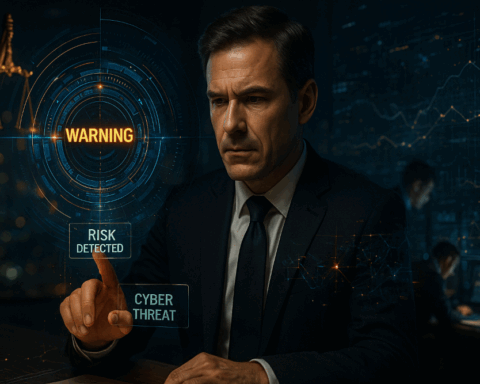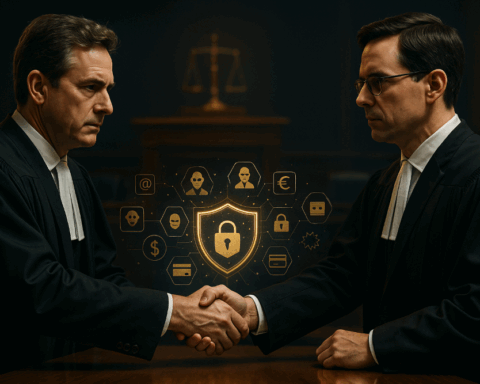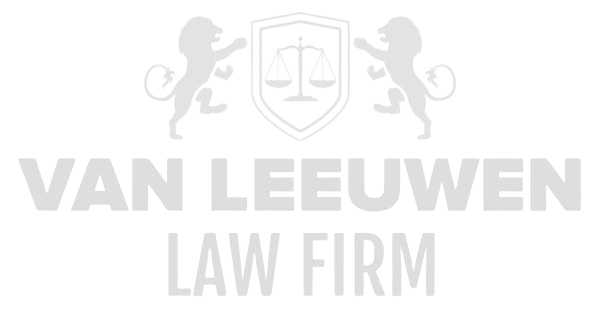The necessity to reconsider and restructure business activities is not merely an administrative matter or a standard reaction to organizational changes. When an organization faces serious allegations of financial mismanagement, fraud, bribery, money laundering, corruption, or violations of international sanctions, it strikes at the core of the company. It not only undermines the trust of customers, investors, and regulators but also exposes systemic weaknesses hidden within existing operations. Such accusations act as a powerful catalyst for profound transformation because they pose a threat to operational stability, organizational continuity, and the reputation often built over decades. Under these circumstances, superficial adjustments are insufficient; the transformation must be deep and structural. Every decision, process, and hierarchical link must be critically examined to uncover and adequately address the fundamental causes of legal vulnerabilities.
The dynamics within the complex legal risk landscape require the restructuring process to be not only reactive but also forward-looking and strategic. The goal is to create a resilient organization that can withstand the current storms of accusations and proactively anticipate future legal developments and regulatory changes. This resilience is achieved through a detailed analysis of processes, responsibilities, and governance structures, with special attention to transparency and accountability. The foundation of a robust organization rests on the ability to provide clarity in decision-making, oversight, and documentation. Without such clarity, the organization remains vulnerable to legal attacks and internal corruption risks. Moreover, the ongoing variability of the international legal framework demands an adaptive approach that integrates flexibility and agility. Only through this integral and multidimensional approach can operational continuity be ensured, reputational damage limited, and the organization prepared for a sustainable future.
Strategic Reorientation
In light of allegations of financial mismanagement, fraud, bribery, money laundering, corruption, or sanctions violations, it is essential to critically reconsider the organization’s strategic direction. This requires a redefinition of core activities with a careful selection of which parts of the business are inseparably linked to the long-term vision and which divisions pose a disproportionate risk to integrity and compliance. Divesting risky or non-strategic segments is not an easy choice; it means letting go of sometimes lucrative but legally vulnerable parts in order to reduce overall legal exposure. This strategic balancing act demands a sharp analysis of the risk-return profile across all business segments.
Markets and products are evaluated on their integrity profile and compliance risks. In an environment where sanctions, international regulations, and local laws constantly evolve, it is crucial to focus on markets that offer a stable and predictable legal climate. This means the organization shifts its focus to segments where the risk of involvement in illegal practices is minimal and where transparency and regulatory compliance are firmly embedded. Such focus not only reduces risks but also contributes to restoring trust among stakeholders and regulators, which is essential for reputation recovery after serious allegations.
Strategic reorientation must also be supported by a continuous process of evaluation and adjustment, enabling the organization to remain permanently alert to changing risks. This dynamic approach makes it possible to respond quickly to new legal threats, market developments, and compliance requirements. Therefore, strategic reorientation is not only a necessary step in recovery from fraud or corruption allegations but also a foundation for sustainable resilience.
Organizational Restructuring
The internal structure of an organization facing serious legal allegations requires thorough review and adjustment. This goes beyond shifting functions or adjusting reporting lines; it requires redesigning governance and management layers that provide safeguards against future misconduct. The complexity of today’s legal risks demands a transparent and accountable organizational form where every link in the chain knows its responsibilities and can be held accountable. Only through clear role and responsibility allocation can risks of errors, negligence, or deliberate wrongdoing be minimized.
Moreover, restructuring should promote a culture of transparency and accountability, where management layers oversee not only operational efficiency but also compliance with laws and regulations. This calls for embedding robust internal control mechanisms and oversight structures that enable quick detection and response to deviations. Strengthening internal governance is thus a crucial means of regaining and maintaining trust from regulators and external parties.
Effective organizational restructuring also implies the incorporation of sufficient expertise in compliance and legal risk management within the top organizational layers. This ensures decisions are made not only from operational or commercial perspectives but are also always tested against the legal and ethical frameworks binding the organization. This lays the foundation for a resilient and ethical organization capable of operating in a complex legal environment.
Compliance and Integrity as the Core of Reorganization
In situations where allegations of fraud, corruption, and sanctions violations seriously disrupt business operations, integrating compliance and integrity is not an optional step but an unavoidable pillar of the restructuring process. This requires that compliance is no longer seen as a support function but as a fundamental part of all operational processes within the organization. Compliance requirements must be embedded in every link of the business chain, from procurement to sales, from personnel policies to financial administration.
Establishing and implementing a zero-tolerance policy towards fraud, corruption, and sanctions violations is vital. This policy must clearly communicate which behaviors are absolutely unacceptable and the sanctions that apply, both internally and externally. It is crucial that this policy is embraced by all organizational levels and that a culture is fostered in which reporting misconduct is encouraged and protected. This is a fundamental part of regaining trust both within and outside the organization.
Such an integrity policy must be supported by effective compliance programs that are regularly evaluated and adapted to new risks and regulations. This includes targeted training, automated compliance controls, and enhanced reporting capabilities. By positioning compliance at the core of the reorganization, the organization becomes one that not only responds to legal problems but actively prevents and manages them.
Financial Restructuring and Risk Management
The financial dimension of a reorganization under the pressure of allegations of financial mismanagement, fraud, or corruption is a complex and sensitive process that has a major impact on the continuity of the enterprise. It starts with an in-depth review of financing structures, assessing the extent to which the current setup can absorb financial risks and limit potential exposures. Special attention is given to liquidity positions and debt management, as these directly determine the organization’s ability to meet its obligations, even in uncertain times.
Protecting assets against legal and financial claims is a crucial focus area. This often requires restructuring ownership and management structures, creating legal shields, and critically reviewing ongoing contractual arrangements that may financially expose the organization. Through these measures, the organization can strengthen its financial position and reduce the risk of irreversible damage from claims or fines.
Sound financial restructuring goes hand in hand with proactive risk management that not only identifies and assesses risks but also develops measurable and actionable mitigation strategies. Implementing effective risk control measures enables the organization to address current problems while better absorbing future financial shocks. This creates a financial foundation strong enough to withstand legal and reputational risks without jeopardizing operations.
Chain and Partner Review
In situations where an organization is confronted with serious allegations of financial mismanagement, fraud, bribery, money laundering, corruption, or sanctions violations, weaknesses are often found in external relationships with suppliers, customers, and other partners. These chain and network relationships are the arteries through which risks can infiltrate and undermine the integrity of the entire organization. A thorough review of these chain relationships is therefore indispensable and requires strict due diligence. This process must be more than a formality; it requires in-depth investigations that evaluate not only financial and commercial aspects, but especially integrity and compliance risks.
The necessity of terminating relationships that pose increased risks requires courage and decisiveness from management. Relationships that increase exposure to illegal practices or fail to provide sufficient transparency must be resolutely ended to prevent further reputational damage and legal complications. While this may have far-reaching consequences for continuity and supply security, it is a necessary step in the recovery process. Selection criteria for chain partners must therefore be sharply and strictly defined, with integrity and regulatory compliance as non-negotiable requirements.
Moreover, implementing structural improvements in the management of chain relationships is essential. This includes establishing permanent monitoring mechanisms and introducing contractual guarantees and sanctions in cases of integrity breaches. Through this rigorous approach, the risk of involvement in criminal activities via the chain is significantly reduced, thereby strengthening the organization against future legal and reputational risks.
Process Optimization and Digitalization
Optimizing business processes and applying digital technologies are crucial pillars in strengthening the resilience of an organization facing legal allegations of fraud, corruption, or sanctions violations. Many of the weaknesses that make such allegations possible stem from manual and opaque processes that are prone to error and manipulation. By redesigning processes with automation and digitalization in mind, control systems can be integrated to ensure continuous monitoring and real-time reporting.
The digitalization of compliance controls enables an organization to detect fraudulent activities more quickly and to immediately identify irregularities. This minimizes the risk of unnoticed violations and makes it possible to create audit trails that are essential in internal and external investigations. Additionally, process optimization simplifies operational workflows, reducing inefficiencies and risks while increasing transparency.
Implementing these technologies, however, requires careful alignment with existing IT structures and clear governance surrounding data management and security. A digitalization strategy that focuses not only on efficiency but primarily on strengthening integrity and compliance forms a powerful line of defense against future legal problems.
Cultural and Leadership Renewal
The interconnection of culture and leadership with an organization’s legal integrity has become evident in countless scandals involving fraud, corruption, and sanctions violations. A healthy, ethical corporate culture and leadership that exemplifies integrity are indispensable for preventing misconduct and restoring trust. This requires a conscious and often profound transformation of the existing culture, in which leadership training and coaching play a vital role.
Crisis-resilient leadership demonstrates integrity not only in words but especially in actions. The ability to recognize and address ethical dilemmas, and to inspire employees to embrace the same values, is crucial. Training should focus on developing risk awareness and building the skills necessary to respond adequately to legal threats. In this way, a management layer emerges that is guided not only by results but also by compliance and transparency.
In addition, creating an open culture where misconduct can be reported without fear of retaliation is of great importance. This requires implementing whistleblower protection mechanisms and fostering a dialogue in which integrity takes center stage. Such a culture helps identify and address problems at an early stage, thereby preventing legal escalation.
Stakeholder Communication and Reputation Recovery
In the aftermath of serious allegations that disrupt operations and damage reputation, effective communication with stakeholders is of decisive importance. Transparency about the restructuring steps taken, the improvements implemented, and the commitment to integrity are crucial ingredients for restoring trust among investors, customers, regulators, and the broader public. The communication process must be carefully prepared and executed, with openness and consistency at its core.
Reputation recovery requires a long-term and strategic approach. Simple statements are insufficient; it is essential to clearly demonstrate which changes have been made and which measures have been taken to prevent recurrence. This process can be strengthened by actively involving independent parties, such as auditors or compliance experts, who can validate improvements and make recommendations where necessary.
It is also important that communication is not one-sided but allows space for dialogue and feedback. Stakeholders must feel that their concerns are taken seriously and that the organization is genuinely committed to recovery and improvement. This interaction contributes to rebuilding trust and strengthening the company’s social legitimacy.
Continuity Planning and Crisis Resilience
The aftermath of allegations of fraud, corruption, or sanctions violations often brings great uncertainty about the future of an organization. Therefore, developing robust business continuity plans (BCPs) is essential to safeguard business operations, even under extreme circumstances. These plans must address not only operational continuity but also the legal and reputational risks that may threaten the organization.
Effective continuity planning requires a thorough analysis of possible scenarios and their impact on all parts of the organization. This includes identifying critical functions and processes, setting recovery priorities, and establishing alternative methods of operation. Furthermore, roles and responsibilities in crisis situations must be clearly defined to enable swift and effective decision-making.
Crisis resilience must also be embedded in the organizational culture and structure, with regular crisis management exercises and evaluations. By preparing for future incidents and external shocks, the organization can build resilience that makes the difference between surviving and failing under pressure.
Measuring, Evaluating, and Adjusting
Successfully restructuring an organization in the context of legal allegations requires ongoing monitoring and adjustment. Introducing key performance indicators (KPIs) for integrity, process security, and risk management is indispensable to gain insight into the effectiveness of measures taken and to quickly identify deviations. These KPIs must be carefully selected, measurable, and aligned with the key risks facing the organization.
Evaluation should be a cyclical and systematic process, where results are not only measured but also analyzed in relation to the set objectives and changing circumstances. This enables the adjustment and optimization of restructuring measures, ensuring that the recovery process does not stagnate but continues to evolve. The adjustment process must also be transparent and well-documented, allowing accountability to both internal and external stakeholders.
By embedding a culture of continuous improvement, the organization evolves into one that not only reacts to legal challenges but proactively sharpens its processes and behavior. This makes it possible to consistently build a future-proof enterprise with strong legal resilience.









